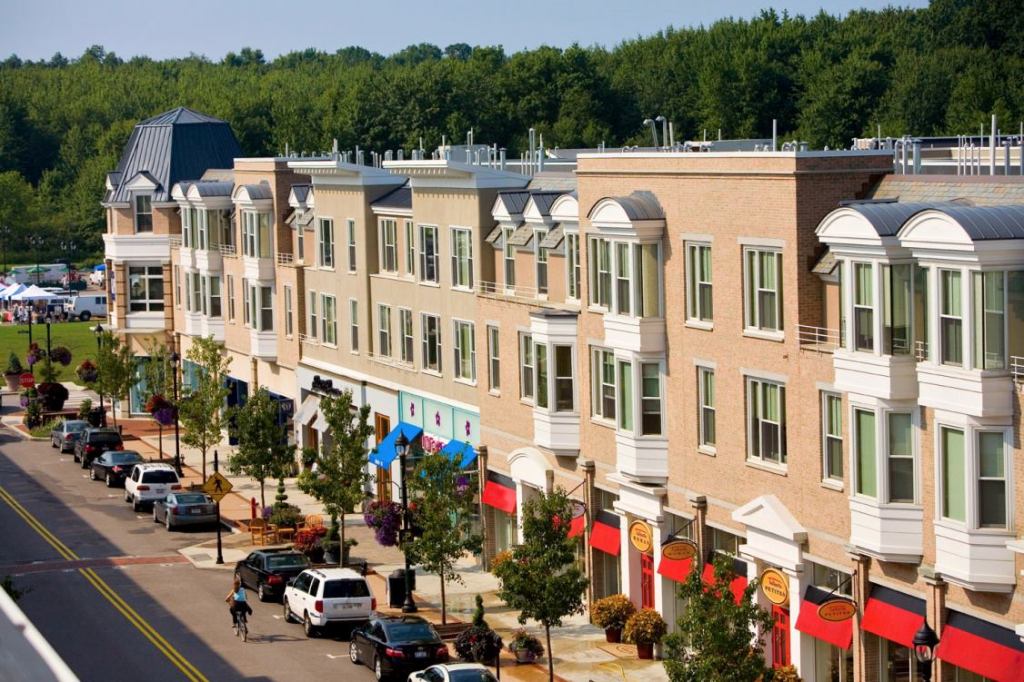“Table A (Allowable Administrative Variations) sets forth all variations that are permitted in the transect zones. No other variations to the prescribed form shall be permitted. Failure to conform to the prescribed form shall result in the denial of a building permit.”
With that threat of conformity, form-based code has hit my native Cincinnati. Form-based code is an attempt to go beyond the abstractions of zoning and to try to guide the character of neighborhoods, rather than just their sizes and types of uses. As the Form-Based Code Institute (FBCI) puts it: Form-based codes foster predictable results and a high-quality public realm by using physical form (rather than separation of uses) as the organizing principles for codes … [they] address the relationship between building façades and the public realm, the form and mass of buildings in relation to one another, and the scale and types of streets and blocks. “They are regulations, not mere guidelines,” the site goes on to warn, “adopted into city or county law.”
With one stroke, the City of Cincinnati has earned the right to tell us in what style we shall build. Part of Plan Cincinnati recently adopted by City Council, the code takes away many of the achievements that the first comprehensive plan in decades gave us in terms of clarity and possibilities. The roots of form-based code lie in the work of Christopher Alexander and the preaching of New Urbanism. It has all the hallmarks of the thinking that wants America to freeze its physical form and even, if possible, go back to the innocence of an imagined earlier past of porches, gables, row houses, and all the other hallmarks of a particular way of building, social relations, and economic conditions.
In Cincinnati, the best new buildings shine forth through their originality and clarity. The worst developments, such as the Banks, a new laager for young professionals stretching between the city’s sports stadia, or the infill housing now being built in the historic Over-the-Rhine neighborhood, are covered with a thin veneer of historic references that hide tightly packed boxes to store humans or goods. As University of Cincinnati assistant professor Rebecca Williamson, who drafted a letter to the City Planning Department to protest the code, argues, neither historical triumphs of Cincinnati architecture such as Union Terminal or the Carew Tower, nor recent innovations in the making of public space and the revitalization of neighborhoods such as the High Line, would be possible under this code. She points out that the code illustrates its ideal with a truly dreary example of recent architecture from various other cities. Is that, she asks, what Cincinnati—or, I would add, any American city—truly wants?
We have lived with the reactionary ideas of New Urbanism for two decades now. They have failed to do anything but stymie good design and serve developers seeking to coat bad design with a trickily sauce. Their products are the architectural equivalent of the Big Mac: familiar, mass produced, easy to digest, and bad for us. (OK, OK, maybe it is more like McDonald’s new salads—they are trying to promote some sort of urban health, after all.) Cincinnati is a diverse city that has used its dramatic natural setting to create an urban landscape that is torn and frayed, but that has moments of true beauty. Rather than trying to stitch those moments together with Dryvit details and bury them with fake-Victorian form, we should be enhancing and building on that tradition with creativity and an architecture that is open and appropriate to how we live, work, and play today.
Aaron Betsky is a regularly featured columnist whose stories appear on this website each week. His views and conclusions are not necessarily those of ARCHITECT magazine nor of the American Institute of Architects.
